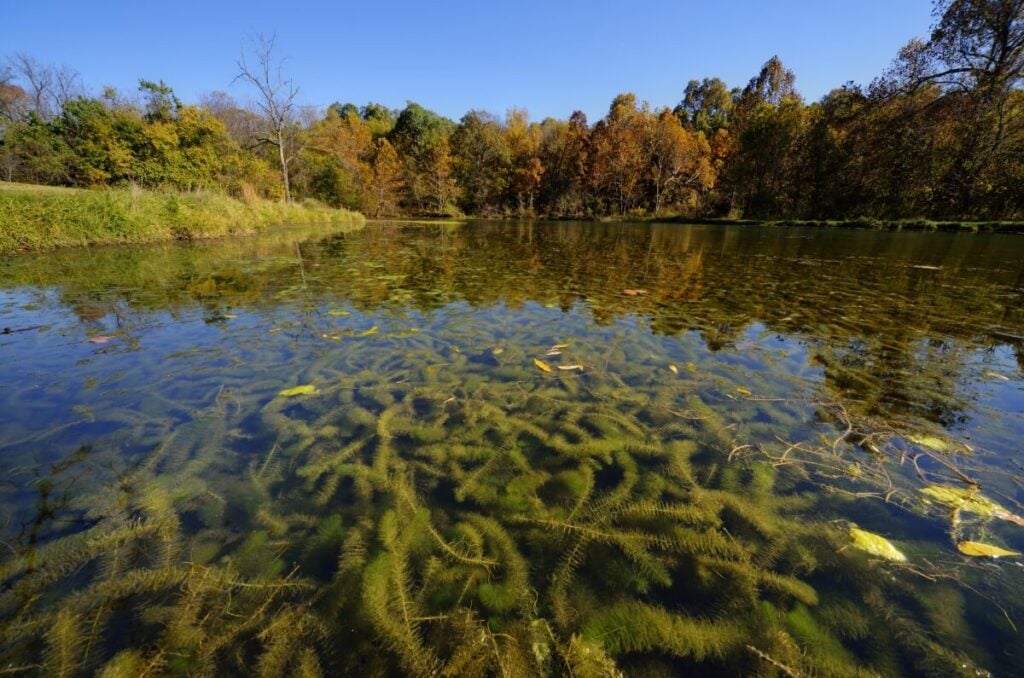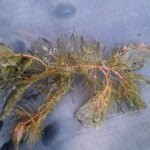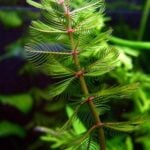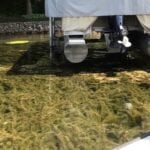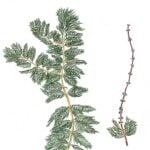Eurasian Watermilfoil
Other Common Names: spiked watermilfoil
(Myriophyllum spicatum)
Non-Native
Eurasian Watermilfoil has feather like leaves with 14-20 pairs of leaflets whorled around the hollow stem along the entire length of the plant.
Description
Eurasian watermilfoil stems can grow to more than six feet long and branch prolifically at the water’s surface. They are spaghetti like and reddish brown to whitish pink.
Leaves are typically less than half an inch long, divided all the way to the midrib like a feather, and contain 14-20 pairs of thread like leaflets. Eurasian watermilfoil leaves are connected by a short stalk; four to five leaves are whorled around the stem, and they are spaced one half to one and a half inches apart.
The flower spike is on the same stem as the leaves, sticks out of water, and reddish flowers whorl around the stem.
Eurasian watermilfoil relies on sprouts or fragments for reproduction and begins growing in cool spring waters (about 59˚ F). The early start, combined with quick growth to the surface forming canopies, gives this plant an advantage over native plants, crowding them out.
Eurasian watermilfoil is often confused for coontail; coontail feels rough when pulled through the hand and Eurasian watermilfoil does not.
There are eight species of watermilfoil in the midwest, and the other seven are all native, including northern watermilfoil. Northern watermilfoil grows with much more control than Eurasian watermilfoil and does not form the large canopies of leaves in short periods like Eurasian watermilfoil does. Eurasian watermilfoil also fragments more, which adds to the unrestrained growth.
Unlike Eurasian watermilfoil, the leaves and fruit of northern watermilfoil are consumed by some waterfowl, and fish are sheltered amongst the beds of plants.
Management Options
Click here for more information on how to control watermilfoil.
Location
Eurasian watermilfoil can be found across the United States.
Propagation
roots, fragments. Eurasian watermilfoil does produce seeds that can be observed poking out of the water in mid to late summer. However it primarily reproduces from fragmentation and re-sprouts annually from surviving roots.
Management Options
Click here for more information on how to control watermilfoil.


